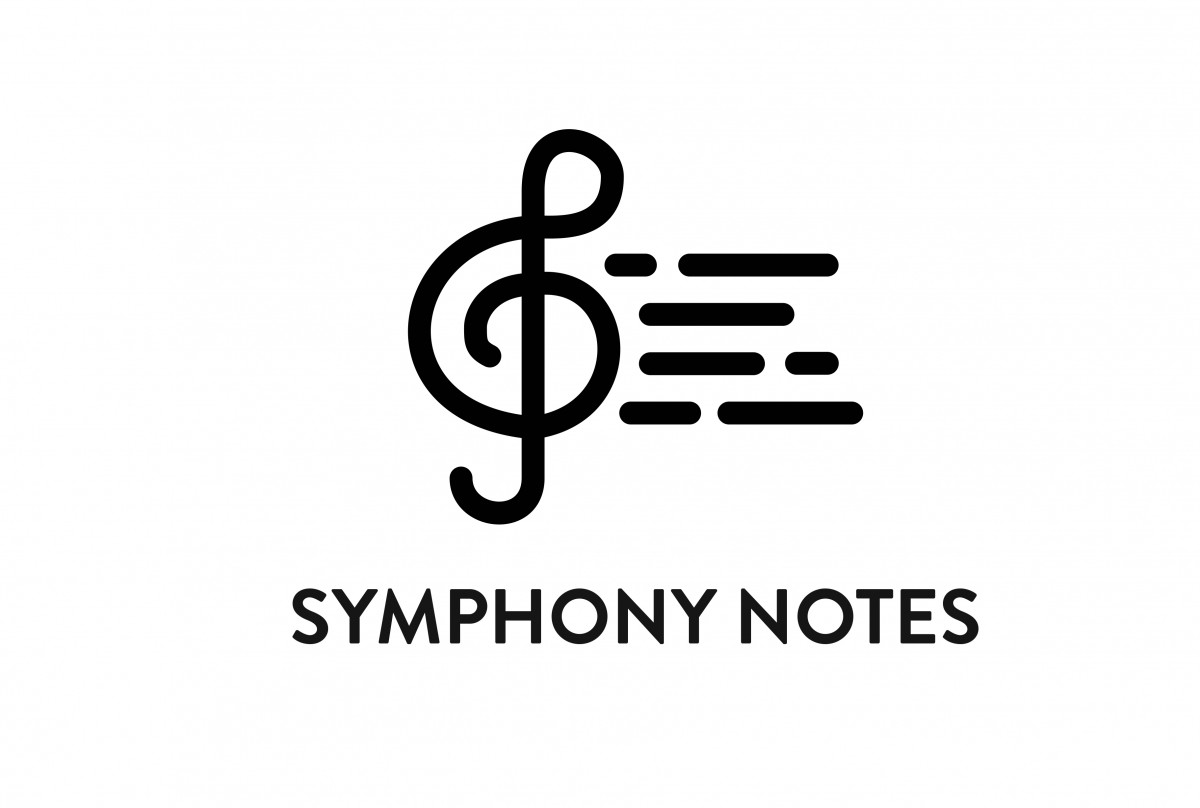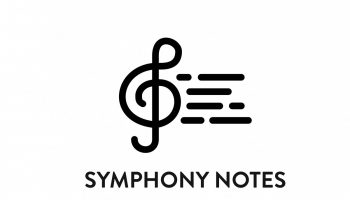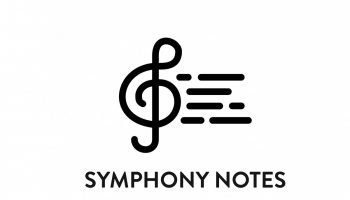Overture to La forza del destino
Giuseppe Verdi
Giuseppe Verdi was born on Oct. 9 or 10, 1813, (he was baptized on Oct. 11) in La Roncole, near Busseto and died in Milan on Jan. 27, 1901. He was, without rival, the greatest composer of Italian opera of the late 19th century. Outside of his operatic repertoire, Verdi also contributed several important works to the choral repertoire, none more important than his setting of the liturgy of the Requiem Mass, dedicated to the memory of Alessandro Manzoni. The premiere of Verdi’s opera La forza del destino took place under the composer’s direction in St. Petersburg, but not with its popular overture, which was written for the revised version of the opera in 1869 and was first performed on Feb. 27, 1869, at La Scala in Milan. It is scored for piccolo, flute, two oboes, two clarinets, two bassoons, four horns, two trumpets, three trombones, tuba, timpani, bass drum, two harps and strings.
La forza del destino, whose title is usually translated literally as “The Force of Destiny,” but could also be called “The Power of Fate,” was composed in 1862 to a libretto by Francesco Maria Piave and is the 22nd of Verdi’s operas. After its St. Petersburg premiere, Verdi had it performed elsewhere under the title Don Alvaro, one of the main characters from the Spanish play Don Alvaro, ó La fuerza del sino, (1835) by Angel Pedro de Saavedra Ramírez de Baquedano, the duke of Rivas. Part of the opera makes use of a scene from Friedrich Schiller’s drama Wallenstein’s Camp.
As is the case with so many of Verdi’s operas, La forza del destino is filled with passionate love, assumed identities, revenge and familial strife. The opera has engendered the superstition that it is somehow cursed. For example, the noted baritone Leonard Warren collapsed and died during a 1960 performance at New York’s Metropolitan Opera. Luciano Pavarotti never performed it and Franco Corelli was known to follow small rituals during performances to avoid bad luck.
All superstition aside, the overture comprises a potpourri of themes and motives from the opera itself, beginning with three chords representing fate or destiny as heard toward the end of the first of its four acts. Additional quotations refer to Alvaro’s aria from Act 4 (Le minacce, i fieri accenti), the prayer (Pace, pace, mio dio) sung by the female lead, Leonora, in Act 2, and part of her duet with Padre Guardiano (Or siam soli). Among the many legendary interpreters of the role of Leonora was the great American soprano, Leontyne Price.
Concerto for Violin and Orchestra in D Major, op. 61
Ludwig van Beethoven
One of history’s pivotal composers, Ludwig van Beethoven was born on Dec. 15 or 16, 1770, in Bonn, and died in Vienna on March 26, 1827. His Violin Concerto, op. 61, was composed in 1806, a particularly productive year that also yielded the three String Quartets, op. 59 (“Razumovsky”), the fourth symphony, op. 60, and Piano Concerto No. 4, op. 58. The work received its first performance in Vienna on Dec. 23, 1806, with Franz Clement as soloist. It is scored for flute, two oboes, two clarinets, two bassoons, two horns, two trumpets, timpani and strings.
Beethoven completed only one violin concerto, although among the surviving fragments from his youth in Bonn is an incomplete Concerto in C major. Two Romances, opp. 40 and 50, and the “Triple” Concerto for Piano, Violin and Cello complete the resumé of Beethoven’s compositions for violin and orchestra. Composed in 1806, Beethoven’s Violin Concerto stands in solitary splendor, not only among his own works, but among all other works in the genre. Even its closest rival, the Violin Concerto by Johannes Brahms, was modeled closely on Beethoven’s towering example.
Beethoven himself had several models from which to work, including the violin concertos of Mozart and Haydn. Works for violin, including concertos, by Kreutzer, Rode and Viotti were of no less importance. These last three violinist-composers are better known by pupils of the violin than by the general public, but they were most certainly known by Beethoven, who, although not primarily a violinist, had a working knowledge of the instrument.
Beethoven’s Violin Concerto owes its existence to an 1806 commission from Franz Clement, a Viennese musical and performing prodigy with whom Beethoven had previously worked on other projects. Clement composed and performed his own Violin Concerto in D major just a few years prior to Beethoven’s, and indeed this work may have been influential (Rachel Barton Pine has recorded Clement’s concerto). Clement’s virtuosity was matched by a phenomenal memory, and he was alleged to have been able to commit to memory large scale choral works and operas, including Haydn’s The Creation and Beethoven’s Fidelio, upon only one hearing. Beethoven worked quite closely with Clement on the Violin Concerto.
Curiously, many details of the solo part were left undecided and unwritten, even after Clement gave the work its first performance on Dec. 23, 1806. Ever the showman, Clement elected to play a sonata of his own composition between the first and second movements of Beethoven’s concerto, holding his instrument upside down and playing on only one string. It is no wonder, then, that Beethoven wrote the following pun on the autograph of the score, “Concerto par Clemenza pour Clement, primo violino al Theatro a Vienne, dal L. v. Bthvn. 1806” (“Concerto, composed with mercy, for Clement, first violinist at the Theater an der Wien).
The earliest Viennese critics had a difficult time coming to terms with the lofty vision expressed in Beethoven’s Violin Concerto. This is understandable in part because its first movement alone is one of the longest and most symphonically conceived works of its kind. The immense and tuneful orchestral ritornello that begins the work, with its five taps on the kettledrum, immediately reveals the scope of Beethoven’s sublime plan, a work characterized by Maynard Solomon as filled with “inner repose,” despite its moments of real drama and (in the development section) pathos.
No less sublime is the exquisite dialogue between soloist and orchestra that defines the second movement, a serene Larghetto that is loosely structured along the lines of a theme and variations. A brief cadenza (Eingang) for the soloist at the end connects the Larghetto to the final movement, a Rondo (Allegro), a vigorous and pastoral piece whose overall ethos evokes the spirit of the hunt (a common device in many finales in the classical style).
A moment that rarely fails to delight audiences is the two pizzicato notes (plucking the open A and D strings with the fingers). As best as has been determined, this is the first major violin concerto to call upon this technique. This gesture, as well as many other passages that exhibit the idiomatic nature of the violin as a bowed string instrument, renders Beethoven’s own transcription of this piece as a concerto for piano — a request that came in 1807 from his contemporary, Muzio Clementi, is rather unsatisfactory, although Beethoven provided for it a most unusual cadenza that includes timpani (Gidon Kremer made a recording that adapts this cadenza).
The Violin Concerto, a work that cast a long shadow on subsequent generations, stands as the first work of its kind in the grand style and the true queen of its genre.
Symphony No. 5 in C Minor, op. 67
Ludwig van Beethoven
Beethoven’s Fifth Symphony, his best-known work, was composed in 1807 to 1808, and it received its first performance in Vienna on Dec. 22, 1808. It is scored for piccolo, two flutes, two oboes, two clarinets, two bassoons, contrabassoon, four horns, two trumpets, three trombones, timpani and strings.
Beethoven’s sketchbooks of 1805, the year in which the third symphony (“Eroica”) was first performed, reveal that the next symphony project he intended to undertake was to be a work in the key of C minor. The dedicatee also had been decided, Count Franz von Oppersdorff, a Silesian nobleman who boasted his own excellent Hauskapelle. The gestation period for Beethoven’s inaugural exploration of a symphony in a minor mode, however, turned out to be a long one — even by the standards of Beethoven’s painstaking pace. The Fifth Symphony was not completed until 1808, and its dedication fell jointly to Prince Joseph Franz Maximilian Lobkowitz and Count Andrey Kirillovich Razumovsky. The work received its first performance (identified as Symphony No. 6!) on the extraordinary concert held in Vienna’s Theater ander Wien on Dec. 22, 1808.
The Fifth Symphony, for all its familiarity to audiences, is not without its mysteries and textual problems. The single most perplexing issue concerns Beethoven’s true intentions for the structure of its scherzo. Most editions of the work (including the recently issued “Urtext” edition published by Bärenreiter) present the following three-part scheme: Scherzo – Trio – modified Scherzo.
Sketch sources, as well as Beethoven’s practice in works stemming from the same period (e.g., the fourth, sixth, and seventh symphonies and the string quartet, op. 59, No. 2) specify a five-part scheme: Scherzo – Trio – Scherzo – Trio reprised – Scherzo. The eminent scholar and former director of the Beethoven-Haus in Bonn, Sieghard Brandenburg, considers the five-part version to represent Beethoven’s true “artistic intentions,” even as the published three-part version represents the work’s “final version.” More recent research by Jens Dufner, however, argues that both versions should be viewed as authentic.
Beethoven’s innovative spirit permeates the Fifth Symphony in other ways. No previous symphony had been as organically — indeed, single-mindedly — permeated by one rhythmic idea as this piece. The familiar taut four-note motive not only dominates the foreground of the first movement, but is a unit that unifies the entire work. No previous symphony had linked the scherzo to the finale without interruption, and no symphony had ever thought to bring back a recollection of a previous movement (the scherzo) within the body of the finale.
The finale itself, with its added resources of piccolo, contrabassoon, and three trombones, represents an experiment in orchestral color that was fully justified by the work’s dramatic narrative trajectory. The use of trombones in both this work and the Symphony No. 6 also points toward a divine intervention, since these instruments heretofore were used solely for sacred music and musical theatrical representations of divine intervention or the supernatural. No wonder E. T. A. Hoffmann, in penning his essay on Beethoven’s instrumental music for the Allgemeine musikalische Zeitung, spoke in terms of “awe” and “fear.” Here was a music of raw power and concentrated energy the likes of which were heretofore unknown.
Hector Berlioz, as a student at the Conservatoire in Paris, found many of his professors reluctant to admit how inadequate they found themselves in light of the imposing German master, Beethoven. Berlioz’s Memoirs relates a wonderful tale concerning one of his teachers, Lesueur, and how he was forced to confess his true admiration for the Fifth Symphony. After the work had been performed, Berlioz rushed to his teacher to find out what he thought about it. Lesueur responded: “Ouf! Let me get out. I must have some air. It’s amazing! Wonderful! I was so moved and disturbed that when I emerged from the box and attempted to put on my hat, I couldn’t find my head. Now please leave me be. We’ll meet tomorrow.”
When the enthusiastic young Berlioz pressed Lesueur the next day, the master’s reply was simply to shake his head and say, “All the same, music like that ought not to be written.” Berlioz triumphantly responded, “Don’t worry master, there is not much danger that it will.”
One wonders how often such a scene has been repeated since that extraordinary concert on Dec. 22, 1808 when Beethoven first presented the Fifth Symphony to the world. It will be a sad day indeed if this immense composition ever fails to inspire awe. The entire gamut of concert audiences, from the most learned professional musician to the most casual listener, view a performance of the Fifth Symphony as a special occasion. Whether or not Beethoven meant its first movement to represent a “seizing of fate by the throat,” or if, as the Allies found in its “dihdih-dih-dah” an encoded cipher for victory, the greatest victory ultimately is that of the creative human spirit through economy of means.
Musicologist David B. Levy is professor of music at Wake Forest University in Winston- Salem, North Carolina. He has also taught at the Eastman School of Music of the University of Rochester and the University of North Carolina School of the Arts. A Beethoven scholar, he founded the New Beethoven Research Group and has lectured widely throughout the United States and Europe. Levy will give a Pre-Concert Lecture at 6:45 p.m. Tuesday, July 24, in the Hurlburt Church Sanctuary.





